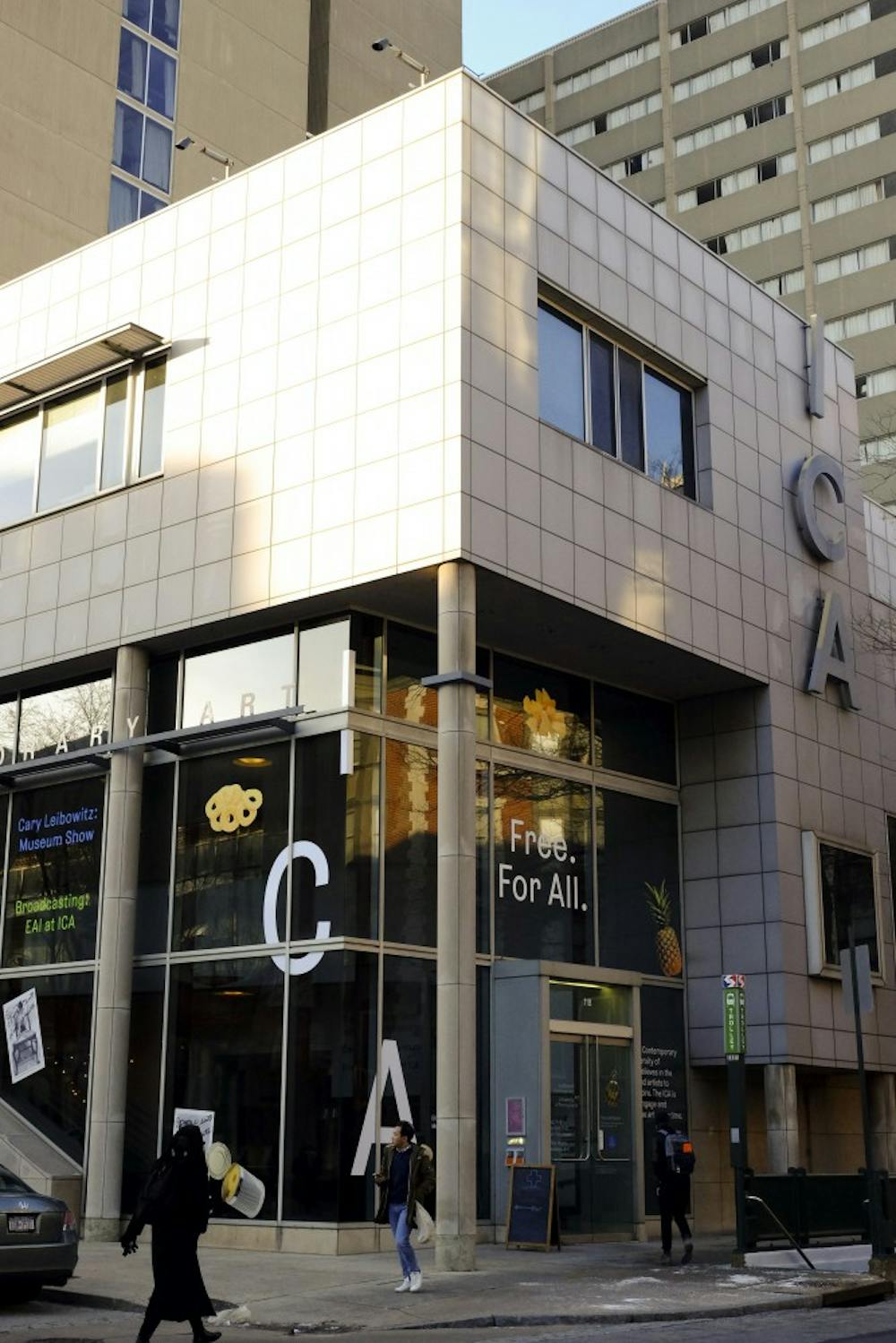This past weekend celebrated the winter opening of the Institute of Contemporary Art (located on 36th and Walnut Streets for those unfamiliar). Marking the first show of its installations, the opening hosted three exhibits: Tag: Proposals on Queer Play and the Ways Forward; Cary Leibowitz: Museum Show; and Broadcasting: EAI at ICA. Open until August 12 for the first two and March 25 for the latter, there’s no reason to miss these extraordinary works of art.
At the opening itself, the crowd is not exactly what I am expecting. For a first–timer at the ICA, I’m expecting students. After all, the institute is located almost at the heart of campus. But a second glance proves otherwise. The visitors are made up primarily of 30, maybe 40–year–olds—clearly not all Penn students, but rather people who actually went out of their way from either Center City or West Philly to take in the art. In this way, the ICA is very much a place of community, drawing those in the art scene together.
My first steps take me upstairs, where Cary Leibowitz: Museum Show is displayed. It almost seems as if it’s Candyland brought to life. The exuberant colors, stopping short of being gaudy, contrast deeply with the clean white and grey of the ICA lobby. When I describe the exhibit as Candyland, it feels almost sacrilegious—that is, until I read the description. The artist, Cary Leibowitz, goes by the name “Candyass.” I set one foot on the bright pink carpeting. To my right are giant cans, and my left, an upside–down rainbow. The reds, pinks, and yellows do not stop: walls are plastered with canvas paintings. One says “Loser Line Forms Here.” Another, “Ugh he’s crying again.” In the next room, a pair of pants dangle from an invisible thread with the words “Kick Me” stitched into the butt region. It’s a juxtaposition of the dazzling colors and the morose substance of the exhibit.
As one art critic put it, the exhibit is one that “transforms self–doubt and social skepticism into something much larger than niche art–world critique: a heartrending and intimate meditation on our inescapable secret doubleness, the lacerating, manipulative and above all debilitating self–aware conscience that lies always beneath, or behind, or just around a corner, with a mocking wink.” To mock the lowbrow and the fakeness of society is Cary’s way of exploring issues of identity, modernist critique, and queer politics. Maybe it doesn’t seem all that inapplicable to Penn students, what with Penn Face and all.
Nestled between the rooms flashing with bright colors, though, is the next exhibit, Broadcasting: EAI at ICA. The room is marked by black curtains, black walls, just blackness (or maybe just the absence of light). Its purpose is to, well, broadcast. The only hints of light from this room are from television and projection screens, all playing different things at the same time. One has people say “gender” and “nation” in different languages—maybe a reference to the inter–border nature of these topics as the artists reimagine them. Another is showing a video of a computer screen, on it massive amounts of folders titled New Folder 1, New Folder 2, and so on. I’m not quite sure what it means, but maybe it’s the overload of information categorized into arbitrarily defined subsets.
The exhibit is meant to get the audience thinking about ways of communication as the word “communication” has evolved over time. From prehistoric times to modern–day, we now have information at the tips of our fingers. What this brings to light are the different media now used and the social implications of such broadcasting formats.
After having spent nearly an hour in the institute, I make my way back downstairs to see the final exhibit, Tag: Proposals on Queer Play and the Ways Forward. This one is a combination of the last two, I think: an exploration of how the influence of technology and media, along with its fandom subcultures and artistic discourse, has generated a whole vast new world of possibilities for queer identification.
In comparison to the last two, the color scheme of this exhibit is a lot less extreme. It’s a white space, filled here and there by the pieces that make it a whole. Here, there’s a set of models—kind of like the ones you see in the window display of a store. But each of them are clad in clothes so rarely found in displays. One in particular has on a denim jacket with a number of pins covering it, each pin with a declaration of identity. There, a video is playing of a naked woman in the bathtub bleeding from her nose. In the next room, there is a giant inflated latex pig on the floor with its piglets suckling at its milk. All the piglets are pink except one. Through these works, the artist conveys that it’s the clothes that allow for identity. It’s the digital. It’s the stories.
The pieces this winter are, in my opinion, difficult to interpret, but in that sense, also thought–provoking. So take an hour of your day to visit the ICA. It’ll be worth it.







